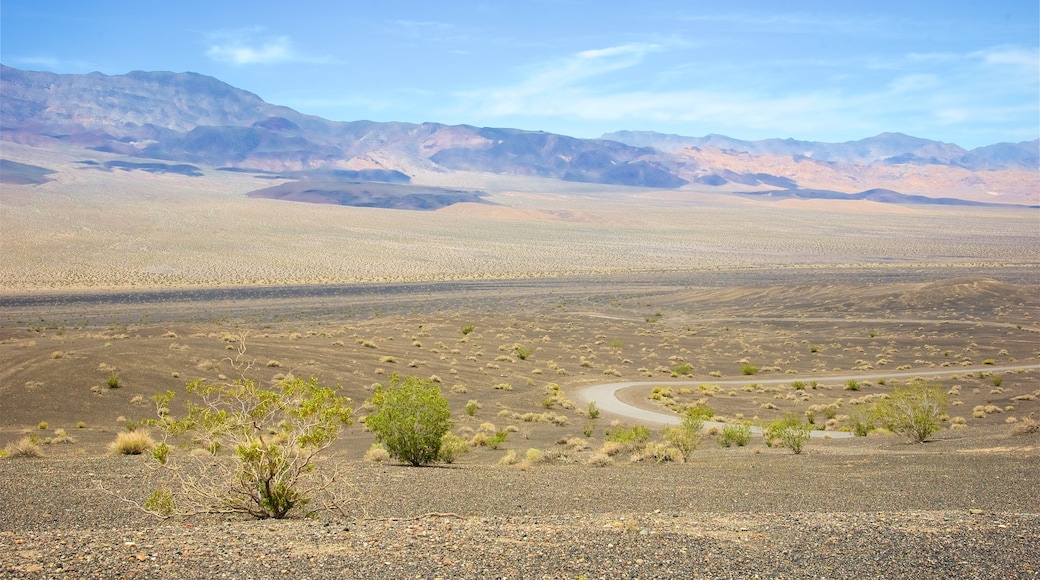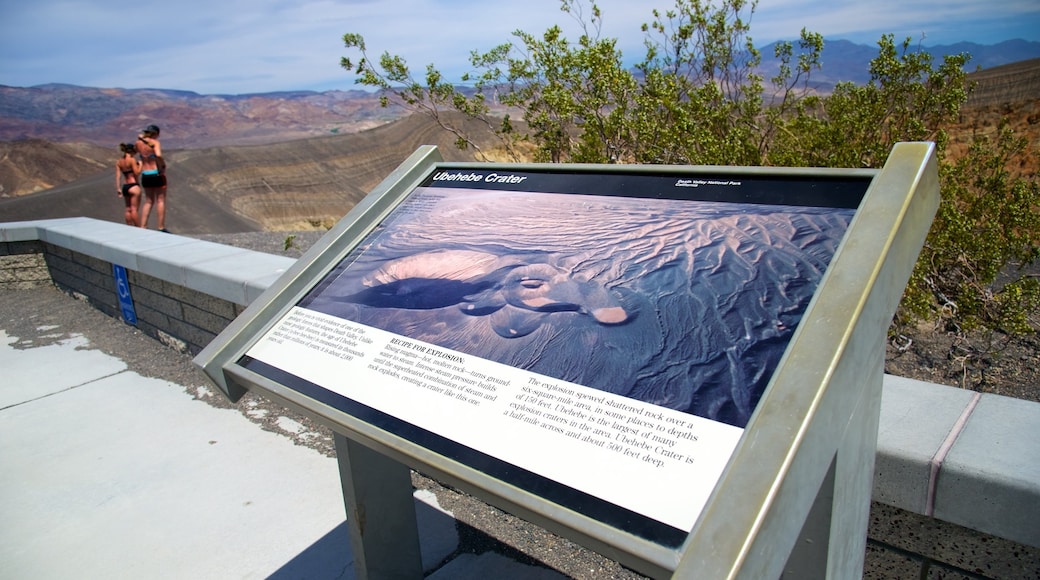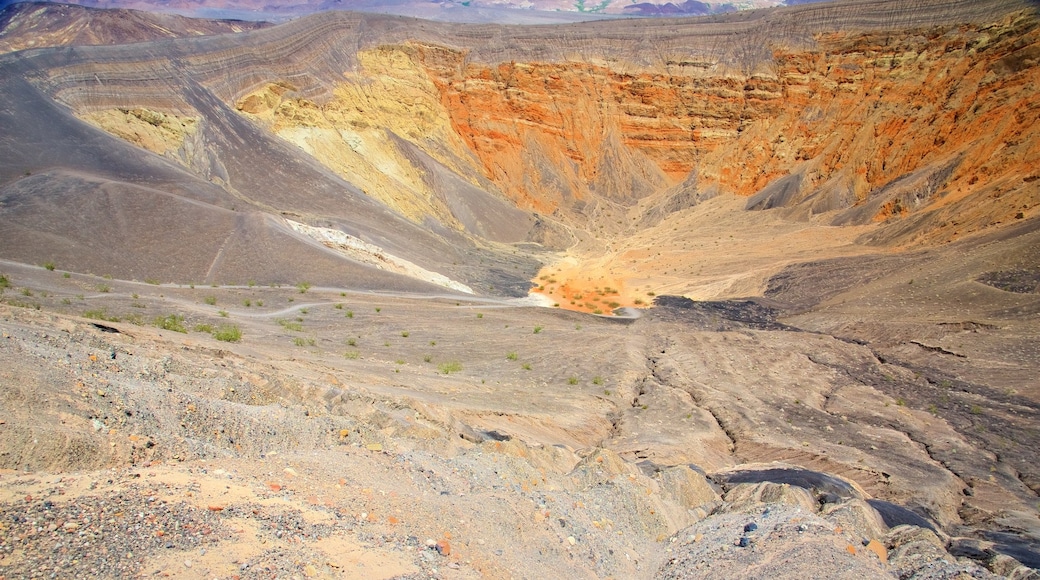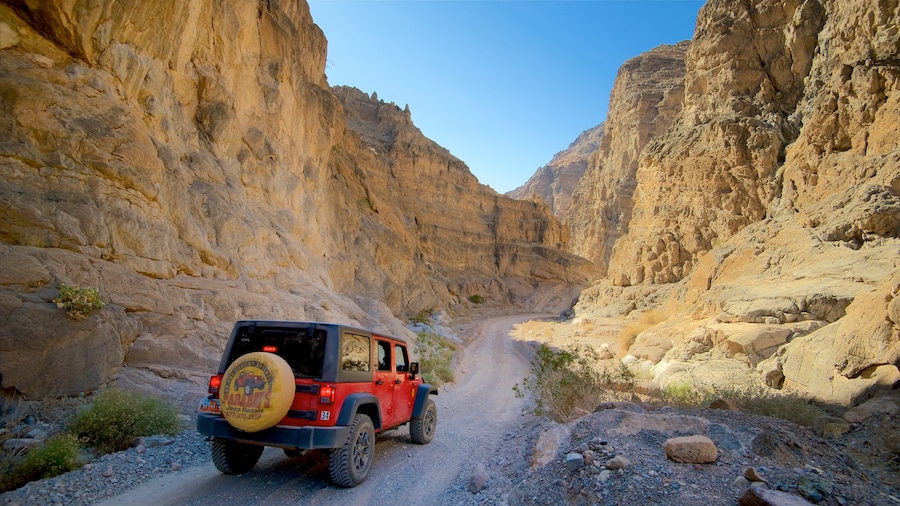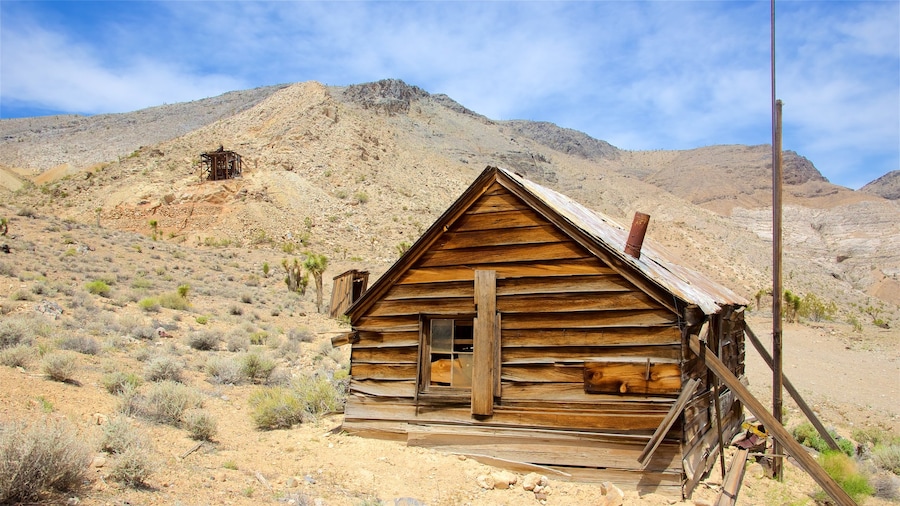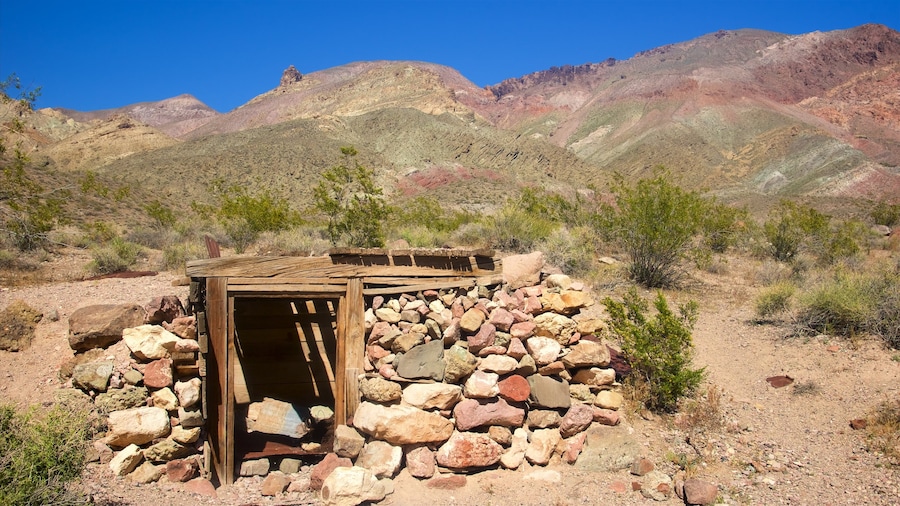Peer into a monumental volcanic crater and explore the surrounding cinder fields, which tell the story of Death Valley’s ancient geological formations.
Ubehebe Crater is one of several volcanic craters in the northern section of Death Valley National Park. Sheltered by the Cottonwood Mountains, this crater has etched its geological history into the valley. Check out the enormous crater rim, which is 600 feet (180 meters) deep and half a mile (0.8 kilometers) across. Spot stripes of sediment in the volcano walls. Imagine the force of this volcano that erupted thousands of years ago.
Three major trails start from the Ubehebe Crater. Follow the first trail to reach the rim of the crater. This formation is known as a maar volcano, created when hot magma met groundwater and caused steam and gas explosions. Some believe that Ubehebe last exploded 300 years ago, covering the surrounding area with layers of cinder ash.
Look into the crater itself to see the exposed bedrock from the Miocene era that spans the crater walls. The sediment stripes contain limestone, mudstone, volcanic cobbles and quartzite. If you’re feeling energetic, hike along the second trail and make your way around the crater rim. The round trip is about 1.5 miles (2.4 kilometers). Take photographs of the striated rock and the white silt that covers the bottom of the crater.
Try to spot Tin Mountain in the distance. The magma from Ubehebe rose up through a fault on the mountain’s western side. This fault also caused the uplift of the surrounding Cottonwood Mountains. The Timbisha Shoshone Indians know this crater as Tem-pin-tta-Wo’sah, which means “coyote’s basket.” After you’ve completed the trail around the crater, continue on toward Little Hebe, which is a spatter cone that still contains a deposit of lava.
The Ubehebe Crater is located amid the volcanic field in Death Valley’s northern half. Be cautious when exploring the trails, as the path has plenty of loose material. Bring plenty of water and sturdy shoes if you intend to embark on the hiking trails. The crater is 56 miles (90 kilometers) northwest of Furnace Creek. There is a parking lot at the trailhead. Pay the admission fee to enter Death Valley National Park.
